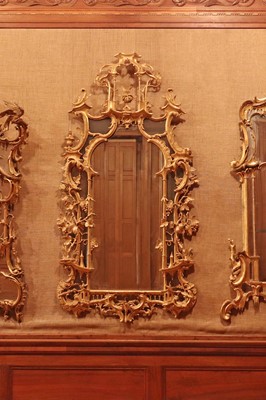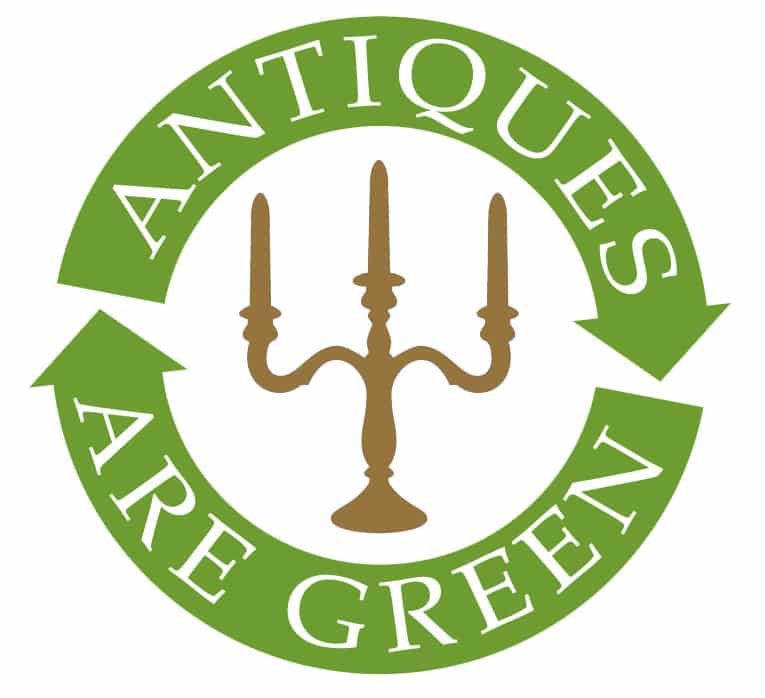14th Sep, 2023 10:00
The Guinness Sale at Elveden
50
☘ A George III giltwood mirror
A George III giltwood mirror,
c.1760, Irish, in the manner of Thomas Chippendale, with a later arched plate in shaped mirrored borders, surmounted by a pagoda and entwined with fruiting vines, restorations and losses,
124cm wide
235m high
Provenance: Farmleigh, Entrance Hall.
Take advantage of our Sworders Delivery Service. Please see 'Shipping estimate' below.
Thomas Chippendale was one the most significant furniture creators of the 18th century, achieving an international reputation and producing beautiful designs that have echoed through generations of furniture-making. This mirror in particular combines both Irish taste and Chippendale styles with an elegant, flowing and fruitful frame filled with ripening vines, imaginative rococo scrolls and chinoiserie flair.
During the 18th century there was an increasing demand for a luxury market, and in 1754 Chippendale published 'The Gentleman and Cabinet-Maker’s Director', a subscription pattern book that ensured he was perceived as one of the most influential and impressive cabinetmakers of his time. The book contained 161 engravings of a wide range of domestic furniture in the ‘Gothic, Chinese and Modern Taste’ (rococo) as well as plainer, more practical pieces. Chippendale, through this innovative showcase of design, became wildly successful, and his pattern book was reissued twice, in 1755 and 1762, with additional plates in the Neoclassical style that was quickly becoming a society favourite.
Chippendale excelled over his contemporaries due to his superb understanding of design and craftmanship, with many of the pieces ensuring function and practicality was met as well as beauty.
Sold for £19,000
Condition Report
The centre mirror plate later. The frame suggests there would have been a horizontal plate divider across the middle, now masked by regilding. Some loose pieces of decoration (which are present - one vine leaf from right hand side of the frame, and one flaming urn finial from the right hand side). Central mirror plate presumed to be later. The frame regilded and restored.
Additional images uploaded.
IN PERSON
To bid in person at auction for the first time please register for a bidding paddle in advance by filling out and submitting a registration form at our front desk. When registering in person we require photo ID, such as a passport or driving licence.
ABSENTEE BIDDING
If you cannot attend the auction in person we can bid on your behalf. You can leave an absentee bid on our website.
The amount you bid should be your maximum bid. We will bid up to that limit for you, and remember you may end up paying less than your limit, depending on other bidding on the day.
You can leave an absentee bid up to half an hour before the start of any sale. Please note when we receive two or more absentee bids for the same amount, the first bid received will be the one taken.
LEAVE COMMISSION BIDS ONLINE
If you would like to leave a commission bid on our website you can do so up until 30 minutes before the sale starts. Leaving a commission bid through sworder.co.uk is free for all registered clients. Thereafter you may register bank card details under your account in order to bid live. Click here to register an account.
BID LIVE ON sworder.co.uk
You can bid live at our auctions from the comfort of your home or office using bidding platform Sworders Live. It is easy to register and you can watch the auction live as it happens. A 'Bid Live' button will appear on the auction on our website homepage when a sale is live; simply click the button to sign in or register with your card details. There is no additional charge for this service.
For further instructions on registering to bid live, please click here.
TELEPHONE BIDDING
If you would like to bid by telephone please contact our team prior to the auction with your details of the lots you are interested in and your full name, address, telephone number(s) and email address. Once our team have entered your bid request you will receive an email confirmation. We will contact you during the sale and one of our team will bid live with you over the phone.
Please note that we normally offer this service for lots with an estimate of £500 or higher and all telephone bid requests must be received by close of business the day before the auction.
Auction: The Guinness Sale at Elveden, 14th Sep, 2023
‘I wish all the recipients of lots from this Elveden auction years of enjoyment from their purchase, as I believe the vast majority of these items are likely to be heirlooms for generations of the future.’
Edward Iveagh
Viewing
Sale Location
The auction will take place at Elveden Hall, London Road, Elveden, Thetford IP24 3TQ. The sale commences at 10am, with doors open from 8.30am.
Viewing
Viewing will be held at Elveden Hall, London Road, Elveden, Thetford IP24 3TQ.
Entrance by catalogue only, admits two.
Purchased in advance - £35 (inc. postage) – Please send contact details to accounts@sworder.co.uk
Purchased on the door - £30
Saturday 9 September, 10am - 4pm
Sunday 10 September, 10am - 4pm
Monday 11 September, 10am - 7pm
Tuesday 12 September, 10am - 4pm
Wednesday 13 September, 10am - 4pm
All lots are, however, extensively illustrated and carry detailed condition reports - see 'Condition report' at the foot of each lot description.
Refreshments by Maision Bleue available on site.
Lots from Farmleigh are denoted by a ☘
Sorry, we cannot calculate a pre-sale automated shipping cost due to the items weight/size.
Should you be successful in buying this item, a specific shipping estimate can be requested after the sale by using the link in your invoice email; this also includes requests for international delivery.
If you would like further information about shipping and collection please see here.
Buying a pre-loved, antique, or vintage item not only provides you with unique style and value for money but it also helps to reduce landfill, and the annual emissions of an antique or vintage piece can be as little as one sixteenth of those of its new equivalent!
Sworders is proud to be supporting the work of Antiques are Green - the movement that was founded in 2009 to promote “a greener future created from the past”. Read their fascinating carbon footprint study of a Georgian chest of drawers versus a modern equivalent here
Request A Valuation
Here at Sworders, we are happy to offer a free online valuation service. Please fill out the form and press the 'Submit' button below.
To help us with your valuation please attach clear photographs of the item where possible. You can submit up to 5.
Approximate dimensions are also useful. Expect to hear from the appropriate valuer as soon as possible.


















.jpg)
%20(003).jpg)
